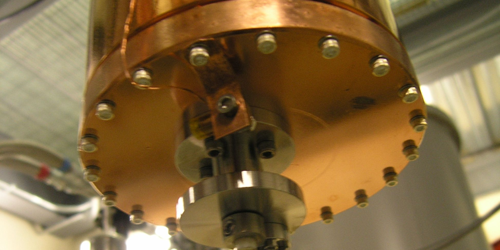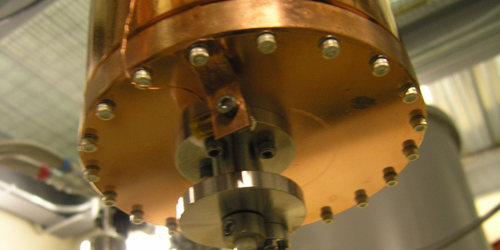Looking for Weightier Axions
If dark matter is made of axions—weakly interacting particles that are billions of times lighter than electrons—then there should be trillions of them in every cubic centimeter of space. And if that’s the case, it might be possible to detect the particles indirectly as they convert into microwave photons in the presence of intense magnetic fields. This axion-to-photon conversion is rare, but it should occur more often for axions that are inside a microwave cavity whose resonant frequency matches the (as yet unknown) mass of the particles. A team of researchers from Yale University, the University of California, Berkeley, the University of Colorado at Boulder, and Lawrence Livermore National Laboratory, California, has followed this approach to search for much larger axion masses than previous experiments were designed to detect. The authors derive new constraints on the parameters in certain axion models over a particular mass range and suggest that probing even heavier axions will soon be possible.
Researchers have been searching for axions using cavities since the method was first proposed 30 years ago. So far, the detectors have been sensitive to axions with small masses (a few eV). But theorists have predicted that axions can have masses anywhere between 1 eV and 50 meV, with the latest calculations suggesting that the particle masses are unlikely to be less than 50 eV. The challenge with building detectors for larger masses is that they require tinier cavities. These are harder to fabricate, and they probe a smaller volume, which reduces the already weak signal expected from axion conversion. To boost the detection sensitivity, the researchers built an unprecedentedly cold and quiet detector by using low-noise electronics that had been developed for quantum computing. In a pilot experiment, the team excluded certain models of axions with masses around 24 eV. Eventually, the authors expect to be able to extend their search to the promising mass range beyond 50 eV.
This research is published in Physical Review Letters.
–Matteo Rini
Matteo Rini is the Deputy Editor of Physics.





